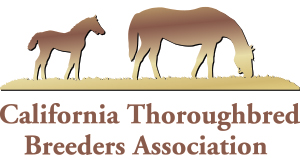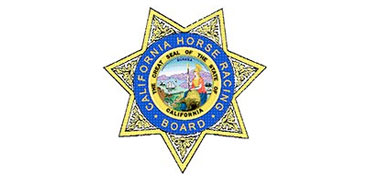From CHRB
CYPRESS, Calif. (Dec. 13, 2019) – The California Horse Racing Board conducted its regular meeting Thursday, December 12, at Los Alamitos Race Course. Chairman Gregory Ferraro presided. Vice Chairman Oscar Gonzales and Commissioners Dennis Alfieri, Wendy Mitchell and Alex Solis also were in attendance.
The audio of this entire Board meeting is available on the CHRB Website (www.chrb.ca.gov) under the Webcast link. In brief:
- The Board moved a proposed regulatory amendment that will further restrict use of the riding crop, or whip, in both racing and training. Described by Dr. Ferraro as the most restrictive whip rule in North America, if not the world, the proposed amendment to Rule 1688 will limit use of the riding crop to six times during a race and no more than two times in succession without giving the horse a chance to respond before using the riding crop again (within the six total limit). Correct uses of the riding crop include using the crop in an underhanded position with the crop always at or below shoulder level, showing or waving the crop without touching the horse, and tapping the horse on the shoulder with the crop in the down position while having both hands on the reins and touching the horse. Commissioner Solis and CHRB Chief Steward Darrel McHargue, who both enjoyed long and successful careers as jockeys, said the new restrictions will require riders to change their styles, but they expressed confidence that jockeys can make the adjustment.
The Chairman solicited extensive testimony from members of the Jockeys’ Guild before he called the vote for the new riding crop regulation. Dr. Ferraro, Vice Chair Gonzales and Commissioner Solis discussed the matter with Guild membership and leaders on multiple occasions over the last two months, which led to substantial changes from the previous two versions.
Possible penalties for misuse of the riding crop include a $1,000 maximum fine and minimum suspension of three days, absent mitigating circumstances, such as use of the crop for safety purposes, as determined by the stewards. The rule also prohibits use of the crop during training. The text now goes out for 45-day public notice before being returned to the Board for a public hearing.
- During public comment, the Board heard from a number of people expressing their views on animal rights, the importance of racetrack jobs, and other issues concerning the life of a racehorse.
- The Board accepted documents from Santa Anita that largely satisfied the conditions placed on its license for the meet that opens December 26, including a report detailing safety protocols during inclement weather. Dr. Ferraro expressed confidence in the integrity of those individuals now responsible for the racing surfaces but cautioned, “If the Board has any information that the policies that we’ve agreed upon are not being followed, or we’re starting to slide into another problem situation, this Board does have the ability to step in, and we will if we have to.”
Still unresolved are required agreements between the California Thoroughbred Trainers and both Santa Anita and Golden Gate Fields. The Board authorized Vice Chairman Gonzales to conduct a hearing on these matters as conditions for both the Santa Anita and Golden Gate licenses.
- Executive Director Baedeker reported that the report being prepared by the CHRB concerning the reasons for the racing and training fatalities during Santa Anita’s 2019 winter-spring meet is taking longer than expected due to its complexity, so the new anticipated release date is January 15.
- Dr. Rick Arthur, the CHRB’s equine medical director, gave a lengthy report dealing with a number of equine welfare issues and medication practices. He said there is strong international support for the safety initiatives being implemented in California. Dr. Ferraro expressed particular interest in a related report indicating that furosemide, or Lasix, can be equally effective in controlling bleeding when administered 24 hours before a race as those same doses administered four hours before a race. Dr. Ferraro has indicated his intent to eliminate medications in racing and training.
- The Board allocated 2020 race dates for Northern California by approving a proposed calendar submitted by the California Authority of Racing Fairs that has the Humboldt County Fair meet starting one week ahead of the late-summer meet at Golden Gate Fields. The allocation leaves unresolved whether the northern stakeholders will reach agreement on keeping Golden Gate open for stabling and training during the fair season. The allocations include simulcast dates preceding and following the actual race dates for each meet.
As allocated, the northern schedule will begin December 18, 2019, at Golden Gate in Albany through June 16, followed by the Alameda County Fair meet in Pleasanton (June 17 through July 14), the California State Fair meet at Cal Expo in Sacramento (July 15 through August 4), the Sonoma County Fair meet in Santa Rosa (August 5 through August 18), the Humboldt meet in Ferndale (August 19 through September 1), the referenced Golden Gate meet (August 26 through October 6), the Big Fresno Fair meet (October 7 through October 20), concluding at Golden Gate (October 21 through December 15).
- The Board approved the license application for the Pacific Racing Association to conduct a race meet at Golden Gate commencing December 26 that will run through June 14, provided Golden Gate complies with statutory requirements pertaining to simulcast outlets.
- In three separate actions, the Board authorized racing secretaries at Santa Anita, Los Alamitos and Golden Gate to include medication restrictions in their entry conditions for races, subject to agreements with horsemen’s organizations.
- Representatives of The Stronach Group, which owns both Santa Anita and San Luis Rey Downs (SLRD) Training Center, reported on their short-term and long-term stabling needs. They indicated they no longer are considering adding new stalls in what is now a largely unused northern parking lot at Santa Anita along Colorado Place, but instead are focusing on adding stalls at SLRD beyond the current capacity of 499.
- The Board gave final approval to a rule prohibiting the administration of bisphosphonates to horses within facilities governed by the CHRB.
- The Board authorized for 15-day public notice a more inclusive requirement for the transfer of pertinent veterinary medical information to the new owners of claimed (purchased) horses.


